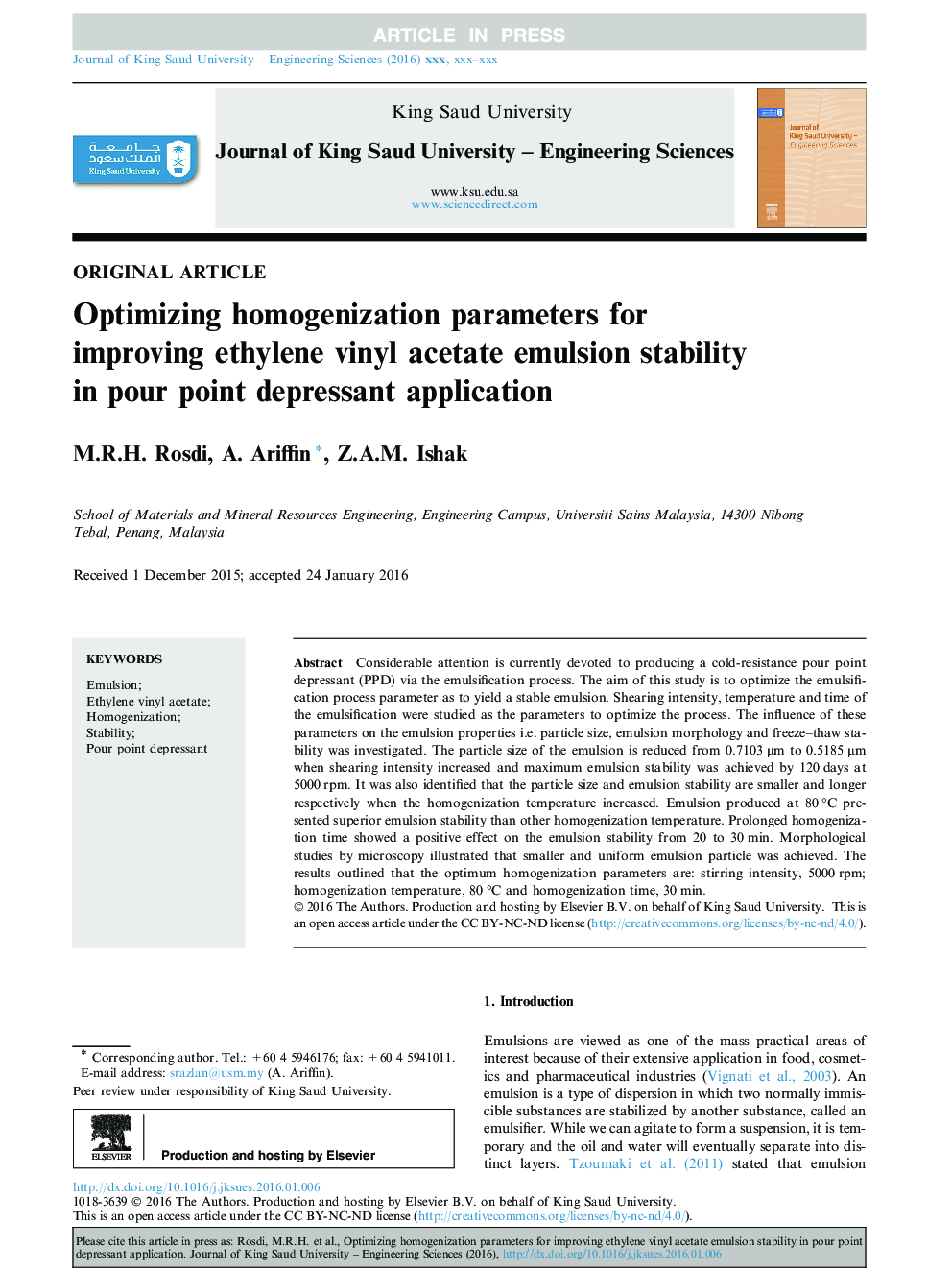| Article ID | Journal | Published Year | Pages | File Type |
|---|---|---|---|---|
| 7216544 | Journal of King Saud University - Engineering Sciences | 2018 | 11 Pages |
Abstract
Considerable attention is currently devoted to producing a cold-resistance pour point depressant (PPD) via the emulsification process. The aim of this study is to optimize the emulsification process parameter as to yield a stable emulsion. Shearing intensity, temperature and time of the emulsification were studied as the parameters to optimize the process. The influence of these parameters on the emulsion properties i.e. particle size, emulsion morphology and freeze-thaw stability was investigated. The particle size of the emulsion is reduced from 0.7103 μm to 0.5185 μm when shearing intensity increased and maximum emulsion stability was achieved by 120 days at 5000 rpm. It was also identified that the particle size and emulsion stability are smaller and longer respectively when the homogenization temperature increased. Emulsion produced at 80 °C presented superior emulsion stability than other homogenization temperature. Prolonged homogenization time showed a positive effect on the emulsion stability from 20 to 30 min. Morphological studies by microscopy illustrated that smaller and uniform emulsion particle was achieved. The results outlined that the optimum homogenization parameters are: stirring intensity, 5000 rpm; homogenization temperature, 80 °C and homogenization time, 30 min.
Related Topics
Physical Sciences and Engineering
Engineering
Engineering (General)
Authors
M.R.H. Rosdi, A. Ariffin, Z.A.M. Ishak,
